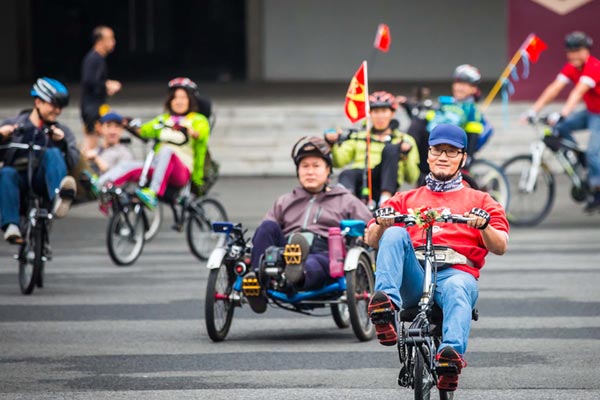China-EU economic ties go ahead despite headwinds
BRUSSELS - China and the European Union (EU) have gone through a bittersweet year in economy in 2016, stumbling over issues, such as the anti-dumping regime and "analogue country," while continuously advancing in trade, investment and strategic cooperation.
Protectionism overshadows ties
Growing protectionism in Europe has resulted in mounting EU anti-dumping and anti-subsidy investigations against Chinese products.
Brussels' anxiety accumulated, as the continent has for years been clouded by sluggish economic growth, a lack of sufficient investment, a disappointing inflation record and a double-digit jobless rate in the wake of the debt crisis and the global financial crisis.
Facing the chronic problems, some EU countries started to vent their disappointment on China, a country which managed to maintain a medium-to-high economic growth amid an average sluggish global growth.
They claimed Chinese imports would hit the bloc's manufacturing industry, especially traditional and energy-intensive sectors, as well as exacerbate unemployment across the continent.
Though a lack of evidence left the argument untenable, the bias affected Brussels' policy making.
The European Commission imposed anti-dumping duties on Chinese steel products in October, attributing its steel sector's difficulties to China's overcapacity.
The decision came just about two months before a deadline required by the World Trade Organization (WTO) rules which demand that the EU quit the "analogue country" method in its anti-dumping investigations on China.
The move forced Beijing to launch dispute settlement procedures at the WTO.
The EU decisions threatened to overshadow the whole picture of bilateral trade ties, experts cautioned.
Anti-dumping cases accounted for less than 2 percent of the total EU-China trade and it was not worthy for Brussels to put bilateral trade ties on edge, Pierre Defraigne, executive director of the Brussels-based think tank the Madariaga-College of Europe Foundation, told Xinhua.
Obstacles to chinese investment
The impact of the growing protectionism was not confined to imports from China, but was spilling over to investment.
Enthusiastic Chinese investors were confused: Europe has been complaining about a lack of investment, but when they brought investment to Europe, they met a cold shoulder.
Skeptics, politicians or lobbyists cited the "threat of Chinese capital" as a major concern and groundlessly accused Chinese investment of harming EU interests, such as national security and intellectual property.
Amid rancorous voices, the German government in October announced a restart of investigation on the sale of the German semi-conductor maker Aixtron to a Chinese company, and to withdraw the clearance certificate it issued in September which confirmed the Chinese buyer's credibility, due to "security concerns."
European countries' worry over the Chinese investment coincides with a protectionist trend and a surge in populism on the continent, said Hannes Dekeyser, an expert with the European Institute for Asian Studies.
Amid the surge of protectionism in global trade and a gloomy outlook of an EU-U.S. free trade deal, Europe's foreign trade policy should focus more on Eurasia, especially China, Defraigne said.
Trade increases amid headwinds
Despite the headwinds in China-EU economic ties, bilateral trade managed to reach a new high in 2016, overcoming global trade downturn affected by sluggish demand and weak growth.
Data from Chinese customs show that bilateral trade value reached 2.94 trillion yuan ($423.34 billion) in the first 10 months.
On a daily basis, trade in goods between the EU and China is worth well over 1.5 billion euros ($1.58 billion), according to the EU data.
In 2016, the EU stands as China's biggest trading partner, while China is the EU's second largest trading partner after the United States.
China and the EU have a solid foundation of cooperation and the two sides have enhanced cooperation on connectivity, investment plans, and other strategies including "Made in China 2025" and Germany's "Industry 4.0," said Wang Yiwei, director of the Center for European Studies at China's Renmin University.
And the connection between the two sides is deepening with the progress of the China-proposed Belt and Road Initiative.
The cooperation between China and 16 Central and Eastern European Countries has become a highlight under the Belt and Road Initiative, said Wang.
Wang cited the fact that 25 Chinese cities have launched China-Europe express lines, which tremendously promoted the links between the two continents and contributed to the infrastructure construction and industrial development in the region.
Experts said it's time for European countries to downplay their baseless worries over China, but to brace for pragmatic cooperation in the future.
























